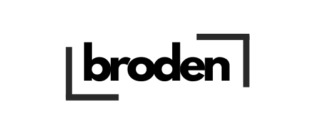In uncertain times, it’s natural to double down on what feels controllable. For many leadership teams, that means shifting budgets away from long-term marketing plays and funnelling them into bottom-of-the-funnel activity: lead generation, retargeting, performance campaigns. After all, those are the metrics that are easiest to measure and justify in the boardroom.
But here’s the paradox: while it might deliver a short-term sugar rush to your pipeline — typically seen as an initial drop in CPA — this effect is short-lived. Over-indexing on lower-funnel performance creates a false economy. As your marketing saturates the limited pool of ready-to-buy customers, CAC starts to climb. The cost per acquisition rises or stays flat, but the value of each customer begins to decrease. Without a strong brand feeding the funnel from the top, you’re spending more to acquire customers who are worth less. Eventually, the pool of high-quality prospects begins to dry up.
Worse still, it pushes you into the race to the bottom. In the absence of a clear, differentiated brand proposition, price becomes the battleground. You’re no longer leading the conversation — you’re competing in it. Your value is reduced to cost, and you’re fighting in a pack of lookalike competitors who all made the same decision to cut brand and focus on immediate conversions.
The Full-Funnel Fallacy
Many businesses fall into the trap of treating brand and performance as opposing forces. Brand is seen as the “nice-to-have” that gets cut first when the market tightens. Performance is the “revenue engine” that gets fuelled.
But the truth is, growth comes from the full funnel. Brand and performance are not separate teams or strategies — they’re two sides of the same coin. One builds awareness and consideration. The other converts interest into revenue. When one is underinvested, the whole system underperforms.
The Diminishing Returns of Performance-Only Focus
The data supports this. According to Les Binet and Peter Field’s extensive research via the IPA, long-term effectiveness in FMCG and mass-market categories is driven by a 60/40 split between brand and performance marketing. While that ratio may shift depending on industry, lifecycle, and go-to-market model, the principle remains: long-term brand investment is essential for sustainable growth. For SMEs, the right balance is about ensuring brand isn’t starved in favour of short-term metrics.
But here’s the crucial context often overlooked: LinkedIn’s B2B Institute states that 95% of your target audience is not in-market right now. That means most of the time, your ads, emails, or outreach are falling on people who simply aren’t ready to buy. If your strategy only targets the active 5%, you’re fighting in the most crowded, expensive part of the market. And worse, you’re neglecting the much larger opportunity to shape future demand, preference, and trust.
Failing to build awareness, salience, and mental availability among the 95% not in-market today means you’re invisible when they are in-market tomorrow.
Sector-by-Sector: What Good Looks Like
So what does the right balance look like? Here’s how brand vs performance investment typically breaks down by business type and maturity:
| Business Type | Brand / Performance Split | Why It Works |
|---|---|---|
| B2C (Retail / FMCG) | 60 / 40 | Focus on reach, brand recall, and emotional connection |
| B2B (SaaS / Services) | 50 / 50 | Long sales cycles need both awareness and lead velocity |
| Startups | 30 / 70 | Early traction requires performance until PMF is proven |
| Scale-Ups | 55 / 45 | Brand improves conversion and lowers CAC at scale |
| DTC Ecommerce | 40 / 60 | Performance drives sales, but brand builds loyalty |
Why It Matters Now
In a market defined by volatility, trust and reputation matter more than ever. Buyers are cautious. Sales cycles are longer. And signal loss from cookie deprecation makes performance channels less efficient by the day.
A strong brand creates demand before it needs to be captured. It lowers your cost per acquisition, improves conversion efficiency, and protects pricing power. It also builds a moat around your business that can’t be replicated by ad spend alone.
The Strategic Shift
Now is not the time to go dark at the top of the funnel. Instead, it’s time to reframe how you think about growth:
- Reconnect your brand with commercial outcomes. Brand isn’t a cost — it’s a long-term revenue multiplier.
- Map your full funnel and identify where prospects are dropping off. Are you feeding enough into the top?
- Rebalance your investment to ensure you’re building future demand while optimising today’s conversions.
Final Thought
In the drive for efficiency, don’t cut so deep you sever your future growth. A well-balanced, full-funnel growth strategy isn’t just good marketing. It’s smart business. And in this climate, it might just be the smartest move you make.
Want to assess whether your funnel is built for sustainable growth? Book a strategy session at broden.ai and get a full-funnel diagnostic tailored to your business.



